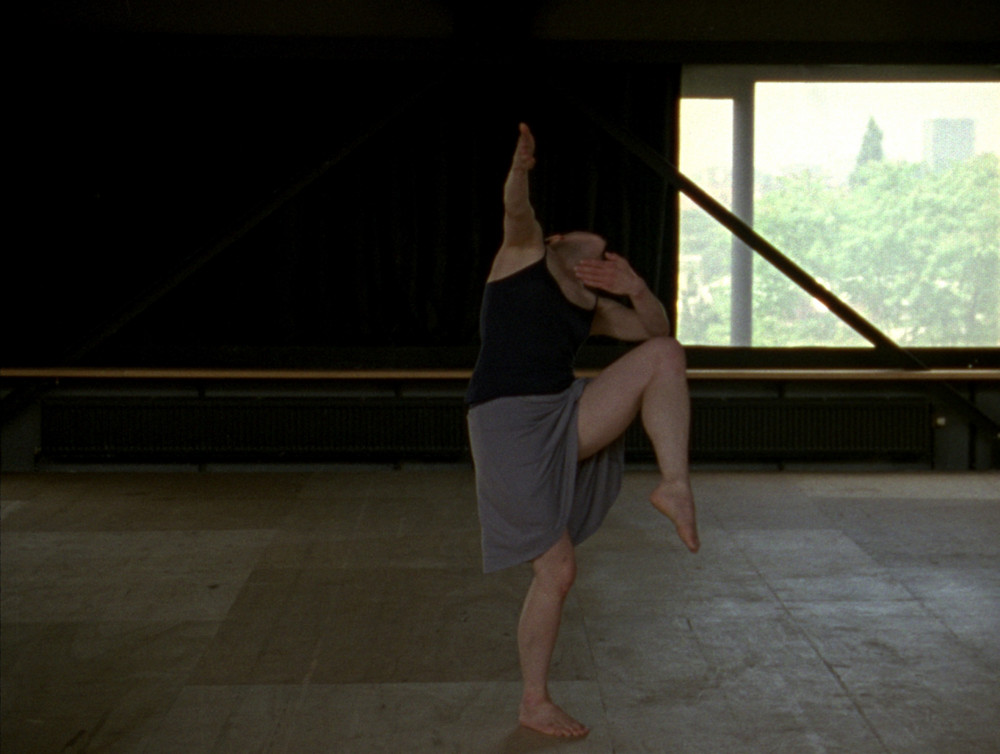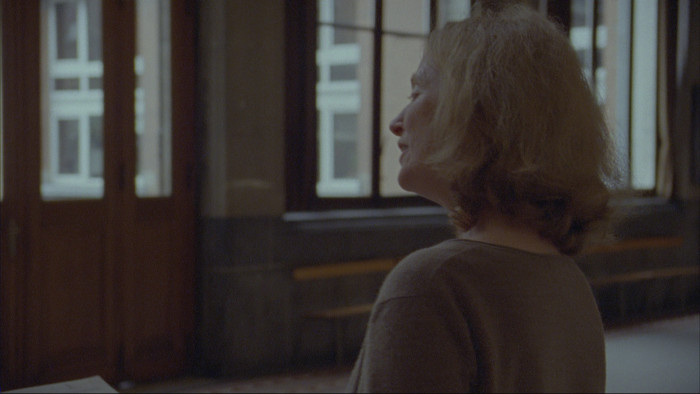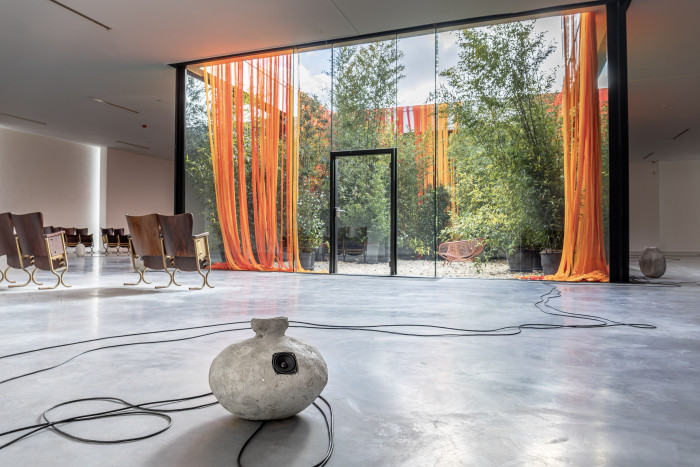Dissonant
Shot in 16mm, Dissonant (2010) opens with music played on a black screen. It is the first movement of the 1923 Sonata No.2 for solo violin by Belgian composer Eugène Ysaÿe. A close-up shows Cynthia Loemij, then a dancer with the Rosas company, listening attentively to the two-minute musical composition, to which she had never had the opportunity to dance until now. Her body is framed by the large windows of a dance studio. At the end of the sonata, Loemij suddenly arches her body backwards and throws herself into a series of movements performed without music for the next eight minutes, sometimes interrupted by black passages, during which Manon de Boer changes the film, while leaving the audio track of the recording in progress. It is therefore the length of the film that defines the montage, so to speak. The momentary absence of images creates tension and attests to de Boer's presence, which becomes performative.
Loemij repeats the dance sequence 6 times during the film. The repetition allows us to appreciate the subtleties and variations of her choreography. De Boer is interested in physical memories, or how the dancer remembers choreographies, movements, and gestures in or through her body. She also explores the creative potential of repetition. A cyclical or repetitive structure is often found in her films, where the dancer repeats the same action for the camera and the viewers see similar sequences again.
Dissonant can be seen as a kind of memory game, in which the dancer first listens attentively to Eugène Ysaÿe's Sonata, and then follows a score that is internalised and therefore inaudible to the spectators, who then witness a form of bodily listening, in which the music is evoked but absent. On the other hand, the sounds of Cynthia Loemij's movements, which would usually be hidden by the soundtrack in a movie theatre, are made audible here, as are her breathing and the sounds of the 16mm camera, which create an alternative musical score.
Cynthia Loemij's intense concentration in Dissonant is common to many of the protagonists in de Boer's films. Whether listening, reading, or remembering, her characters are often lost in time-related tasks, and their concentration is evidence for de Boer of a form of listening that is not only carried out using one's ears, but with the whole body and mind.


